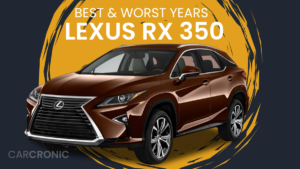Make sure you choose the best BMW X5 years and avoid the most dreadful BMW X5 years by using this guide. The following overview will help you decide which years to opt for.
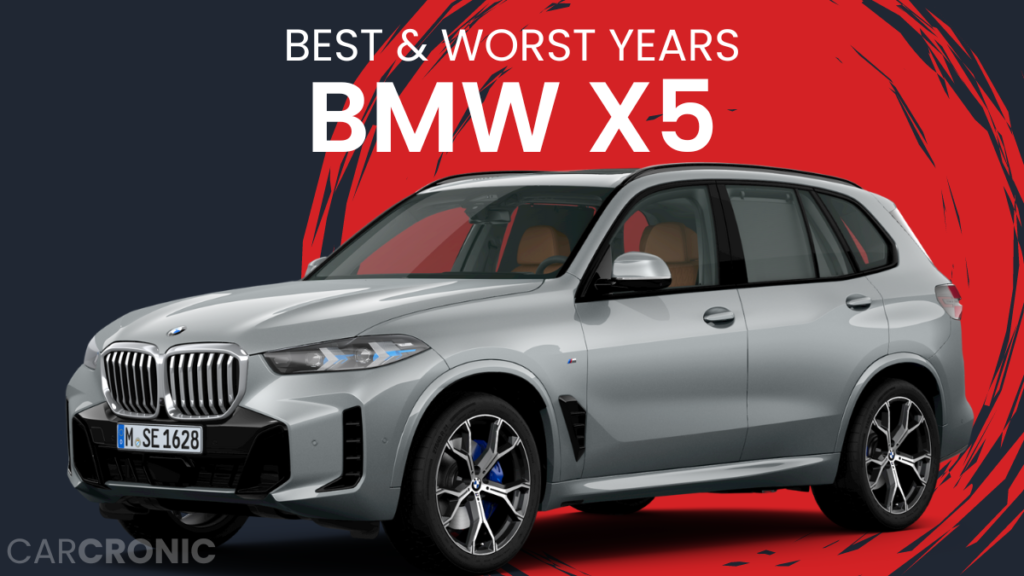
In this definitive guide I’ll break down every one of the BMW X5 generations, highlighting the best BMW X5 years to purchase and the most problematic BMW X5 years to avoid.
Utilizing reliable sources like NHTSA, J.D. Power as well as Kelley Blue Book. thoroughly reviewed reviews, data and personal accounts to give a complete view of the best-performing BMW X5 years.
Be prepared to explore the history of BMW’s X5 Discover the BMW X5’s greatest or worst times, as well as learn the intricate details of its fluctuation in resale value throughout the years.
So, let’s jump right into.
BMW X5 Generations
The year 1999 was when BMW began to develop the X5 an SUV with a luxurious design to enter the market. The initial X5 (E53) had been an important product for BMW because of its superior performance, luxurious and a wide range of options.
It was referred to as an It was referred to as a Sports Activity Vehicle (SAV) because it was different from standard SUVs. It was the appearance of a car and BMW’s well-known driving style.
| Generation | Years |
| 1st generation (E53) | 2000-2006 |
| Second generation (E70) | 2007-2013 |
| 3rd generation (F15/F85) | 2014-2018 |
| 4th generation (G05/G18) | 2019-Present |
Understanding the differences between X5 generations is essential since they demonstrate advancements in technology, appearance and performance that could influence buyers’ choices.
BMW X5 Best, Neutral and the Worst Year
In our complete classifications and rankings of the BMW X5’s greatest and worst years, we consider the importance of various factors that include but aren’t only:
- Reliability of the owner (surveys)
- Costs of annual maintenance
- Ratings for safety
- Consumer Reports ratings on its reliability
- Consumer Reports score on owner satisfaction
- NHTSA recalls, conducts investigations and also complaints
- Edmunds owner reviews
- JD Power owner ratings
- Kelley’s Blue Book (KBB) owner ratings
- Owner ratings for VehicleHistory
- Cars.com owner reviews
The graph that is to come will combine the scores from all sources listed using our own algorithm, giving an extensive view of the BMW X5’s capabilities.
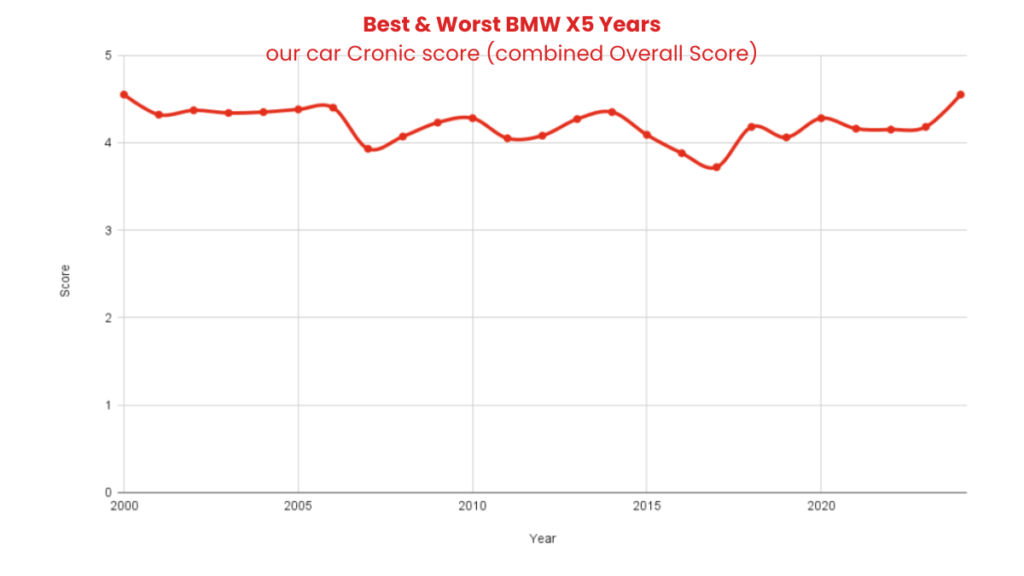
The next step is to present the table that categorizes every model year, and distinguishing them into the top or neutral BMW X5 years based on the combined performance of.
| Generation | Best Years | Neutral Years | Worst Year |
| 1st generation (E53) | 2005 2006 | 2002 2003 | 2000 2001 2004 |
| Second generation (E70) | 2013 | 2012 | 2007 2008 2009 2010 2011 |
| 3rd generation (F15/F85) | 2018 | N/A | 2014 2015 2016 2017 |
| 4th generation (G05/G18) | 2019 2022 2023 2024 | N/A | 2020 2021 |
When we speak of “Neutral Years,” we refer to the model years that did not stand out in regards to positive feedback, or garnered substantial negative feedback. They provide an even performance and experience for the average user.
It is important to recognize that certain aspects like the amount of NHTSA recalls could portray a vehicle in a negative image. A greater number of recalls and complaints generally indicate less reliability for the vehicle.
Let’s look at the specs for the BMW X5’s finest as well as its worst years.
Best & Worst BMW X5 Years 1st Generation (2000-2006)
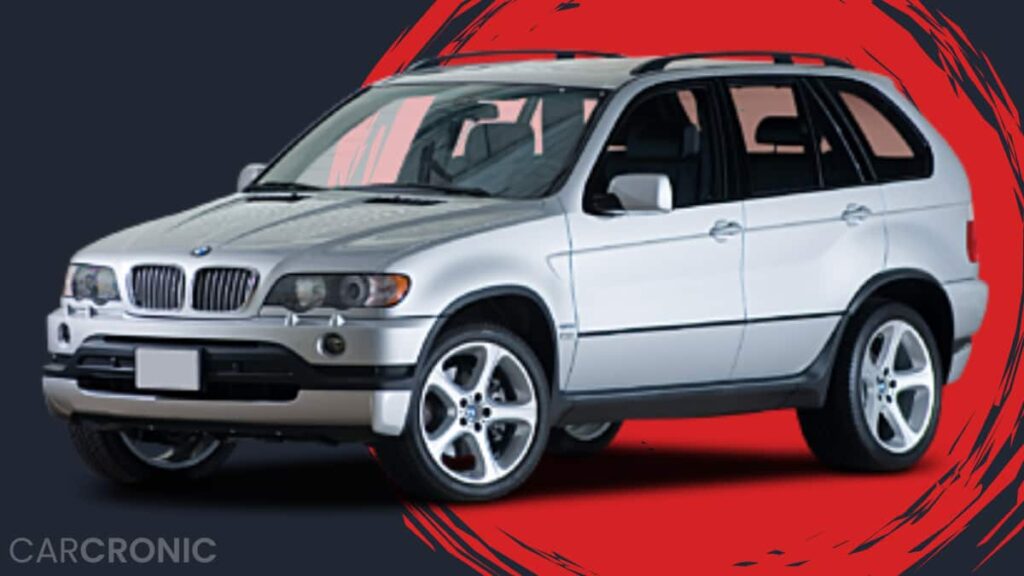
The year 2000 saw BMW made its debut in the SUV segment with the BMW X5 which was a sports Activity Vehicle (SAV) that brought the brand’s distinctive sporting features along with the practicality of a larger automobile.
In 2005, and in 2006 are among the top options to purchase the BMW X5 from this generation.
It is advised to steer away from versions 2001 and 2003 or 2004 models of the BMW X5 due to potential problems.
It is strongly recommended to do a thorough investigation and confirm the authenticity of the VIN due to the large amount of NHTSA recalls relating to the first generation BMW X5.
The Best Years The Best Years: 2005 and 2006
Between 2005 and 2006 the BMW X5 models were standout years, with better engines such as 3.0i inline-six, 3.0i six-cylinder inline, 4.4i V8, and the most powerful 4.8is V8.
These engines delivered a decent combination of power and efficiency as well, including the 4.8-liter V8 achieving 12 mpg in city driving and 26 miles per gallon in the open road.
The vehicles also came with sophisticated safety features, like dynamic stability control and adaptive headlights. The model from 2006 got minor changes to get more appealing appearance.
There were recalls on in 2006 for the X5 due to problems with the rear shock absorbers and the Occupant Detection System (ODS) which included issues in the mounts made of rubber that are on the absorbers as well as possible defects with ODS sensors. ODS sensors.
The Neutral Years 2002 2003
Both the 2002 and 2003 BMW X5 models found a well-balanced mix of advantages and disadvantages. They came with more engines and trim levels that made driving more adaptable.
The model of 2002 featured an impressive 4.6-liter V8 engine that made it an SUV with high-performance. In 2002, the iDrive system was launched during this time, however many people found it to be too complicated.
The model of 2003 didn’t experience many recalls, however owners are often concerned about a problem with the oil separator which could cause smoke and leaks emanating from the engine.
The worst years The Worst Years: 2000, 2001 2004,
Beware of BMW X5 models from 2000 2001, 2003 and 2004 due numerous problems. The model from 2000 had issues with window regulators as well as windshield wipers, aswell in recalls related to the indicator for the position of the transmission gear switch and the brake pedal arm pivot shaft.
In 2001 the recall was issued on the brake line becoming chaffing. The model of 2004 had recalls regarding overheating battery connectors and issues with the brake vacuum pump and reports of transmissions that jerked. Go through for the NHTSA recalls, and complains from the years that followed.
Best & Worst BMW X5 Years 2nd Generation (2007-2013)
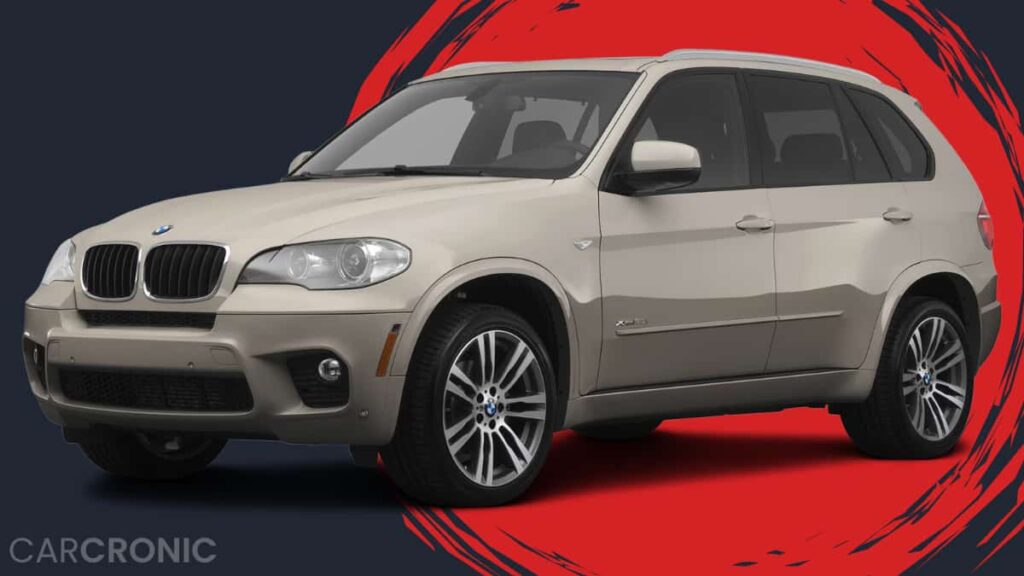
The model was introduced in 2006 for 2007’s model year The 2nd-generation BMW X5 was set to take advantage of the successes of the predecessor. The BMW X5’s 2013 was the only top year of this generation and 2007, 2008 2009, 2010 and 2011 were those BMW X5 years to avoid.
Note: The 2nd generation BMW X5 models have a significantly high amount of NHTSA recalls and poor ratings so extra caution is required. Make sure you do your research thoroughly and confirm before buying.
The Best Years of 2013:
With a fairly low amount of NHTSA recalls or complaints from owners 2013, 2013 was the best year for the BMW X5 for this model. The model year of 2013 benefits greatly of the experiences learned in previous versions.
In this stage the powertrain options had completely improved, with options that range from the basic 3.0L inline-six engine up to the more powerful 4.4L V8 and an efficient diesel engine for those who want efficiency and torque.
Based on Consumer Reports, the latest models come with an average fuel consumption of 12 miles per gallon for urban driving, and 25 mpg when driving on freeways.
It also featured BMW’s latest IDrive technology that had gone through various changes to address prior complaints, and to make it more user-friendly.
Safety features, like lane departure warnings and head-up display began to be added to the X5’s features list.
2013. BMW X5 is the only model to reach an 80 point mark for J.D. power with the second generation X5 lineage.
Kelley Blue Book has rated this model with 4.1, which was the lowest of all. Other platforms such as Edmunds, Cars.com, and VehicleHistory were too negative.
The Neutral Years 2012
2012 was a year of change with regard to BMW X5. BMW X5.
While still offering a lot of the high-tech and luxurious features that the brand is renowned for the 2013 model was directly between the first difficulties faced by the 2nd generation models as well as the refined features of the 2013 model.
The options for powertrains remained the same as prior years, but they were upgraded to improve efficiency in fuel consumption and a few tweaks to increase performance.
The year also saw a decrease in the amount of complaints and recalls as compared to the beginning in this generation.
But, it was still facing certain challenges, including recalls of the power assist brake system, which in the event of malfunction, can increase the likelihood of an accident.
The worst years The Worst Years: 2007-2008 2009, 2010 2011,
2007-2008, 2009-2010 2010 and 2011 BMW X5s have been plagued by a myriad of problems, leading to many recalls and complaints and are therefore these the BMW X5 years to “avoid like the plague”.
Here are a few recalls and complaints from owners of the BMW X5 model years. To view all from 2007 through 2011 NHTSA BMW X5 recalls, and complaints from owners, click the links towards the end.
In 2007, the BMW X5 faced recalls concerning the rear brake disc in which the wrong materials were used and could result in a reduction in brake performance.
In 2008 In 2008, the X5 had recalls related with the front drive shaft universal joint which can break and affect the vehicle’s handling.
Particularly for specifically for the BMW X5 SAVs with engines that have six cylinders, BMW issued a recall regarding a malfunctioning fuel pump that can lead to engine to stop.
In 2009, the BMW X5 wasn’t immune either and recalls were that focused on problems with the heater of the fuel filter that may cause short circuits creating a fire risk as well as an idler of the engine belt pulley bolts which could become loose and break, causing the vehicle to stop power steering assistance suddenly, increasing the chance of an accident.
While showing improvement in certain areas however, the 2009 and 2010 BMW X5 models continued to be plagued by recalls.
For instance, in 2010, the BMW X5 model had a recall that was related with the gauge for fuel showing incorrect readings. The 2011, BMW X5 faced concerns regarding the possibility of a leak in the power steering fluid, which could result in the risk of fire.
Check out NHTSA 2007and 2008 2009, 2010 The NHTSA 2007-2011 report includes BMW X5 recalls and complaints.
Best & Worst BMW X5 Years 3rd Generation (2014-2018)
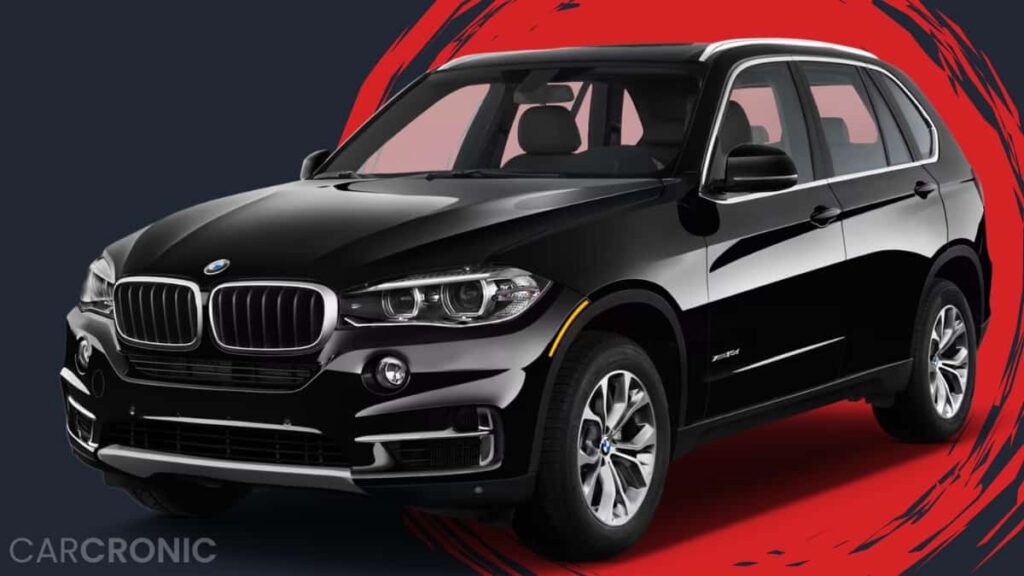
The year 2013 saw BMW revealed the third version of the X5 which set the bar for design technology, performance, and technology for the 2014 model.
The year 2018 is an exceptional year with regard to this model of the BMW X5 in this generation with its incredible ratings.It is advised to steer clear of the 2014model, 2015 and 2016 versions from the BMW X5.
The Best Years of 2018:
The new BMW X5 is known for being dependable. BMW has made improvements to the X5 through the years and has made it an modern vehicle with the latest technology.
The model of 2018 introduced new features, like laser headlights, a new IDrive system, as well as better off-road capabilities.
Customers can choose from a variety of options for engines, including an inline-six turbocharged, twin-turbo V8 as well as hybrids with plug-ins.
The 2018 X5 was a good performer in terms of fuel efficiency ratings, and also received top marks by Consumer Reports, J.D. Power and Cars.com.
Safety features such as blind-spot detection were included in this model.
The Most Worst Years The Worst Years: 2014, 2015 2016, and 2017
The BMW X5 models had a difficult time between 2014 and 2017. In 2014 the VANOS system led to engine problems and an recall. The model for 2015 was plagued with fuel pumps and airbags which were dangerous.
In 2016 there were reputation issues and concerns regarding child seat anchors.BMW was making progress, but they still had recalls for rear suspension and transmission issues. In 2018, a recall revealed problems with mixing coolant in certain models.
Best & Worst BMW X5 Years 4th Generation (2019-Present)
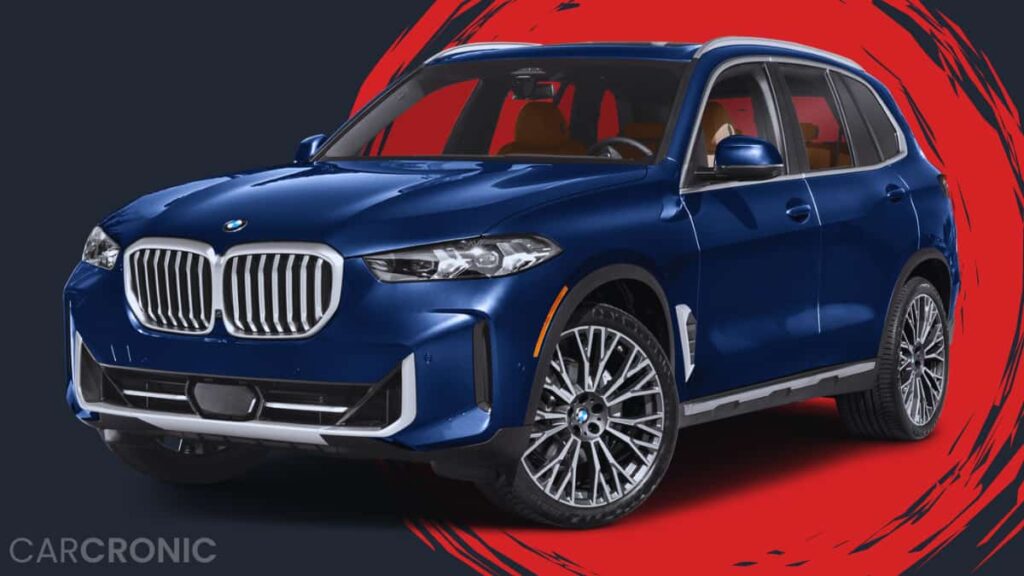
The 4th-generation BMW X5 was unveiled in 2018 to mark the beginning of 2019. The 2019 year of the model, bringing into a new era of technology, luxury and efficiency for the BMW mid-size SUV.
2022, 2019, 2023 and 2024 stand out as BMW X5’s most successful years, while 2030 and 2021 will be BMW X5 years to avoid in this generation.
The Best Years The Best Years: 2019, 2022 and 2023. 2024 and 2024
2019-2022, 2022-2023 and 2024 are definitely the most desirable BMW X5 years in fourth generation.
BMW’s emphasis on improving and refining the X5 will be apparent in the models of 2022, 2023 and possibly the 2024 models.
2019. BMW X5 hit impressive 4.8 VehicleHistory and 4.7 Cars.com scores, while all Fourth-Generation BMW X5 models are, in average, rated 80 percent in J.D. Power.
In 2022 BMW was introducing a vast array of technological innovations. IDrive 7.0 system, which came standard in these cars, gave an intuitive interface and features that could be controlled by voice. Apple CarPlay along with Android Auto became standard, providing seamless smartphone integration.
Safety, as always was the top priority. In 2022, the model featured the introduction of BMW Driver Assistant Professional package, which provides the driver with semi-autonomous as well as a more efficient lane-keeping aid.
The powertrains available in the past have always offered a mix of performance and efficiency with the plug-in hybrid xDrive45e being praised for its stunning electric range and low emissions without compromising performance.
The Most Worst Years The Worst Years: 2020 2021
The first two seasons of the new generation specifically 2021 and 2020, are among the worst of the fourth generation BMW X5 years and are strongly advised to stay clear of.
In 2020, a major issue was reported to be connected to the vehicle’s braking system. NHTSA identified issues in which the brake assist might fail in certain circumstances, possibly increasing the time to stop and the likelihood of causing an accident.
Model 2021, even though it boasted enhancements such as a 48-volt mild-hybrid model for sDrive40i as well as xDrive40i models it was not without its problems.
Recalls were made regarding the possibility of fuel leaks inside the compartment of an engine, thereby increasing the possibility of fires. In addition, certain models encountered problems with the rearview camera not properly displaying the image and posing risks, especially when doing reverse maneuvers.
Read about NHTSA 2020, 2021 BMW X5 recalls and complaints.
BMW X5 Average Resale Values
The graph below shows the typical resale costs for BMW X5 models across different seasons.
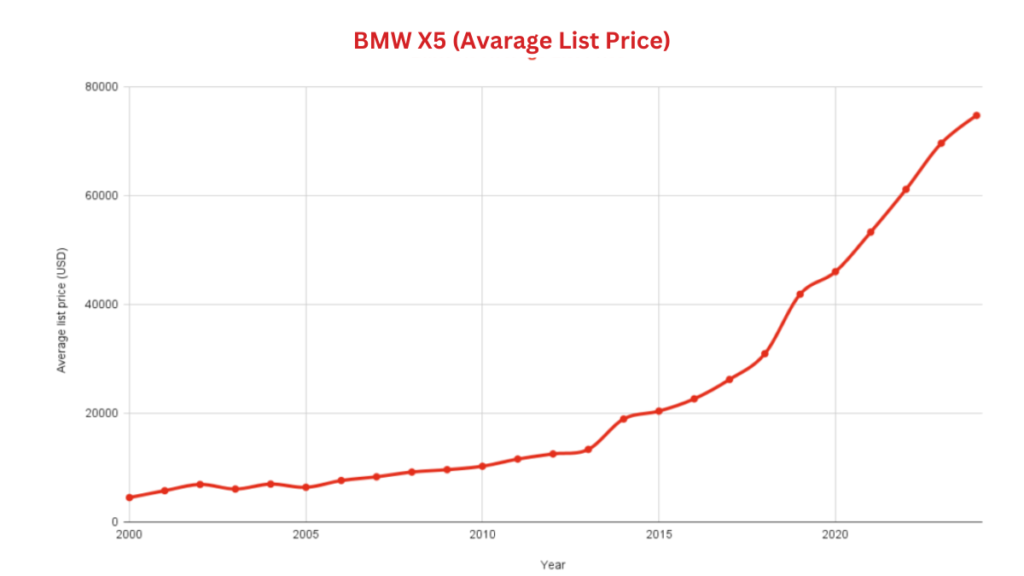
By studying this information potential buyers can get a better understanding of the car’s depreciation rates and make informed decisions when buying a pre-owned model.
Conclusion
Best & Worst BMW X5 Years. There were years with issues and costly repairs, whereas other years had higher performance and technological advancements. It’s crucial that buyers study the year of the model they’d like to select an informed decision.
The ideal year to buy the BMW X5 depends on what you want.Think about the top and the most dreadful BMW X5 years before buying to get a lower alternative or with the most advanced features. Keep safe on the road and enjoy your trip.
FAQs: Best & Worst BMW X5 Years
Which Is The Most Trustworthy BMW X5 Year?
Many experts and enthusiasts consider that the BMW X5 to be one of the most reliable models in recent years.
What BMW X5 Model Is Best?
The X5 lineup comes with a wide range of choices, each having their own strengths. If you’re looking to find an ideal balance between performance and efficiency it is the BMW X5 xDrive40i with its turbocharged inline six engine might be a great choice.
Which BMW X5 Is Most Fuel-Efficient?
The most efficient BMW X5 model is the X5 the xDrive45e. It’s an electric hybrid model of the famous SUV.
Which is Better BMW X5 Or F90 M5?
The BMW X5 is a luxury SUV that is comfortable, spacious and useful for everyday driving as well as family excursions. Its BMW F90 M5, on the other on the other hand, is a performance sports car that is swift strong, agile, and powerful. The choice among two models, the BMW X5 and BMW F90 M5 is based on the features you’re looking for.




